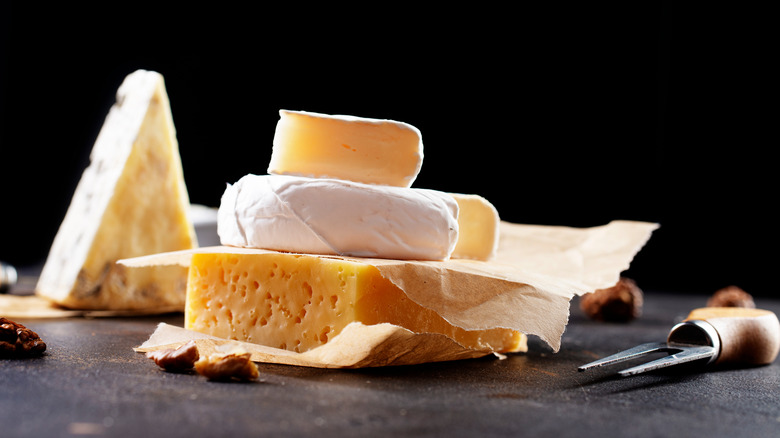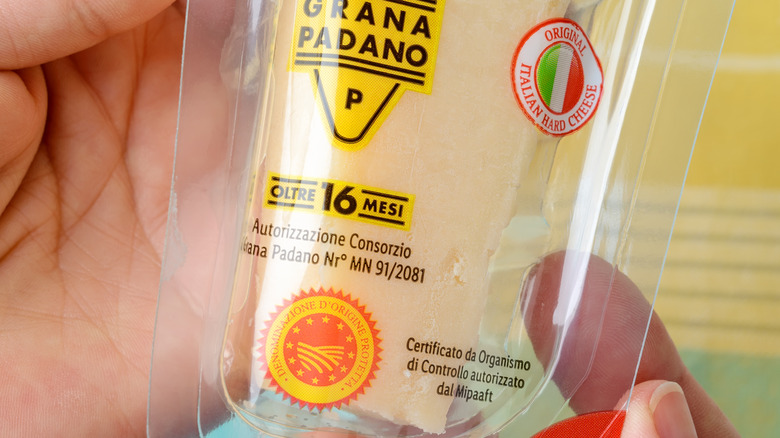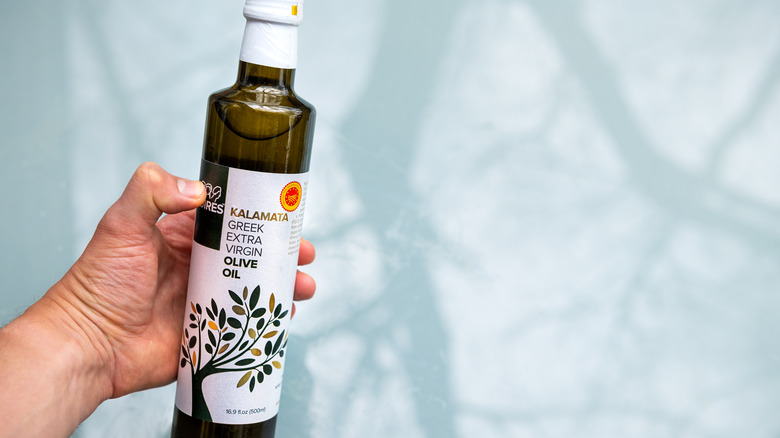The Unique Ways The European Union Protects Its Food Heritage
If you've ever traveled to Europe, you've undoubtedly noticed just how darn good the food tastes, whether you're twirling a lemon spaghetti in Italy or taking a healthy bite of lamb souvlaki in Greece.
When compared to those of the United States, the regulatory standards for food production in the European Union are much stricter in regard to the use of carcinogens, dyes, pesticides, herbicides, and GMOs — and it's one reason the food across the pond tastes so delightful (via Focus for Health). Another, of course, is the centuries of rich tradition behind many favorite dishes, from Welsh meat pies to Polish pierogi to German sauerkraut (via Insider).
The EU has been fierce in its defense of the heritage of traditional foods. Much as a beautiful, historical building in your city or town might be landmarked to protect it and provide for its upkeep (via NYC.gov), European countries have found ways to safeguard regional ingredients and preparation methods. Under these protections, foods such as Dutch gouda and Spanish paprika can't be called those names in other places, helping to uphold the quality of those ingredients instead of seeing them being diluted via imitation.
Three types of food protection designations
You're probably familiar with the fact that true Champagne only comes from the Champagne region of France. For the same reason, Rioja comes from the region of the same name in Spain, and Bordeaux comes from the region of the same name in France. This "denomination of origin" system helps countries protect the quality of their legendary wines. Without it, some new American wine company could decide to market a hurriedly-made "Champagne," for example, and this would threaten the quality associated with that name. Anything you buy labeled Champagne will adhere to tradition and likely taste better (via Concha Y Toro).
In the European Union, three types of similar protection designations exist for traditional foods, explains the European Commission (EC). The category containing the largest amount of registered foods is Protected Geographical Indication, and it protects regional foods that have a specific quality, characteristic, or reputation that can be linked to a particular geographical area (via Gousto). For these products — which can include dishes, agricultural products, and wines — at least one of the stages of production, processing, or preparation of the product takes place in the associated region. For example, the EC cites Westfälischer Knochenschinken German ham, produced in the country's Westphalia region using centuries-old techniques. However, the pork doesn't necessarily have to come from pigs reared in Westphalia.
PDO and TSG
The second-largest category of protected foods falls under the scheme Protected Designation of Origin (PDO), according to Gousto. As the European Commission (EC) explains, this label signifies the most robust protection. Any food, agricultural product, or wine under PDO status must be entirely produced in the region with which it's associated, with ingredients only from that area. For example, the EC cites Kalamata olive oil, which must be produced in the Kalamata region of Greece using only Kalamata olives.
The smallest category of food protection, according to Gousto, is Traditional Specialties Guaranteed (TSG). These foods are made according to a set of traditions, but they don't have to be linked to a specific geographical area. Foods belonging to this category include Bramley apple pie filling, a British type of pie filling containing Bramley apples, golden raisins, and brandy (via BBC), as well as Naples-style Neapolitan pizza, a wood-fired thin-crust pie topped only with San Marzano or Piennolo tomatoes and fresh buffalo or cow's milk mozzarella (via ItaliaRail).
If traditionally crafted, high-quality, protected foods sound good to you, then you might want to add France, Spain, and Italy to your bucket list: These countries, according to Gousto, have registered the most protected foods: 42, 29, and 27, respectively.


